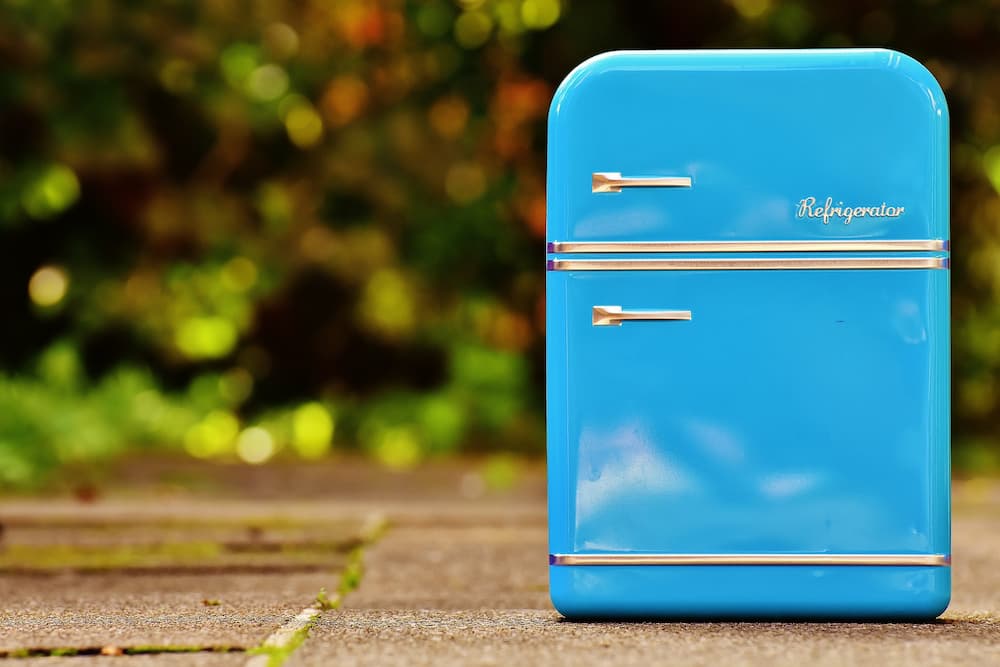
The key to making a successful purchase is to be aware of how much power your refrigerator uses. To make sure you have the right outlet circuit on a dedicated circuit breaker for your refrigerator, you should refer to the energy rating guides.
Especially if it is an older model, refrigerators can frequently have one of the highest power consumption rates among appliances.
You must determine how many amps the refrigerator uses over time if you want to lower power consumption or size a battery backup for it. The US Department of Energy estimates that a refrigerator typically uses 725 watts, or 6.04 amps, at 120 volts.
Please read on for more specific information.
Table of Contents
What Do Refrigerator Amps Mean?
The amount of electrical current a refrigerator’s compressor uses to cool its compartment is measured in amps. If the voltage is 120 volts, the average household refrigerator has an amperage of 3 to 5. Due to the significant increase in in-rush amperage, a dedicated circuit of 15 to 20 amps is needed. The average amperage, which is frequently expressed in kilowatt hours KWH, is lower because the compressor isn’t running constantly.
What Is An Amp?
A unit of constant electrical current is designated by the abbreviation “amp,” or “ampere.” The term “amperage” refers to the strength of the current, which is expressed, as you might have guessed, in amps. An appliance’s electricity consumption can be estimated using this unit of measurement, such as a refrigerator. The term “refrigerator amps” describes how much electrical current the appliance’s compressor needs to run in order to cool its interior.
How Many Amps Does A Refrigerator Use?
By learning about wattage and amperage concepts, it is possible to comprehend the power usage of home appliances.
The average wattage of a refrigerator, according to the US Department of Energy, is 725 watts, which, at 120 volts, equates to 6.04 amps.
You must first know the number of watts per amp (AMP) that your refrigerator consumes in order to calculate how much power it requires.
Find out how many watts your refrigerator consumes as a starting point. Simply multiply the quantity of watts by the voltage to obtain the AMPs.
You can divide 250 by 120 to get 2.083 if, for instance, your refrigerator’s motor consumes 250 watts and operates at 120 volts.
In other words, your refrigerator uses 2.083 AMP.
As a result, different refrigerators have varying capacities, and it is recommended to use the power supply as little as possible to conserve electricity.
You can accomplish it by following a few easy steps.
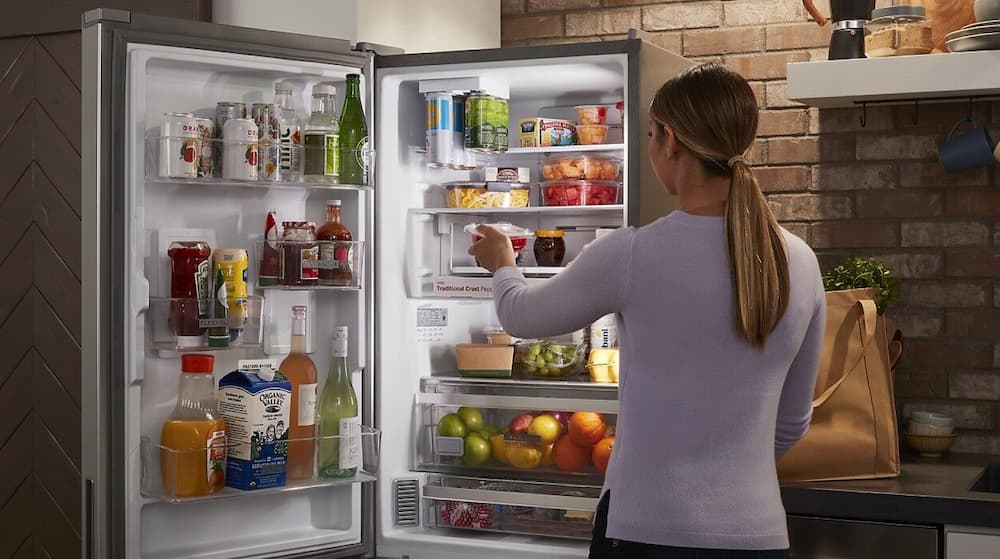
How Many Amps Does A Mini Refrigerator Use?
At 120 volts, the typical mini fridge draws between 2 and 5 amps. However, there is no better way to obtain a more accurate figure than to use the equation Amps = Watts / Volts.
In comparison to, say, a standard-sized residential refrigerator, the average 2 amp mini fridge clearly uses far less energy per day.
The amp draws on a refrigerator with such a large surface area (often expressed in cubic feet) will unavoidably be higher because the latter is larger in capacity. Consider the fact that, on average, these refrigerators draw 15A for context.
You can still find models that are more efficient than others, as you can see from the amps and watts ratings (if you compare the mini fridge options you have available to you). By that, I mean gadgets that use no more than 2A or even less—1.1A—even when they are operating at their highest wattage.
How Many Amps Does A Refrigerator Use On Startup?
Most refrigerators use 15 to 20 amps for a startup. Then, for the 120-volt circuit, they continuously operate at 3 to 5 amps. Since the start-up voltage is high, run this on a dedicated volt circuit. The choice of how to use power, determine energy-efficient levels, and prevent circuit fluctuations and short circuits are all aided by local electrical codes.
Amperage Vs Wattage Vs Voltage
I’m going to briefly explain what each of these terms means because they can quickly become unclear and are simple to conflate. A brief physics lesson is in order now. (I’ll work to minimize any discomfort.)
Amperage
Electric current amplitude is measured in amps. As you might expect, it is measured in amps and can provide you with information regarding the energy consumption of a given appliance.
Wattage
Wattage describes the amount of energy needed to operate a specific appliance. Regulations from the government require manufacturers to display the wattage somewhere on their product.
Voltage
It’s a little trickier to explain this one, but to put it simply, voltage is what moves electric charges. Higher voltages result in more electricity flowing to an appliance; it is measured in volts.
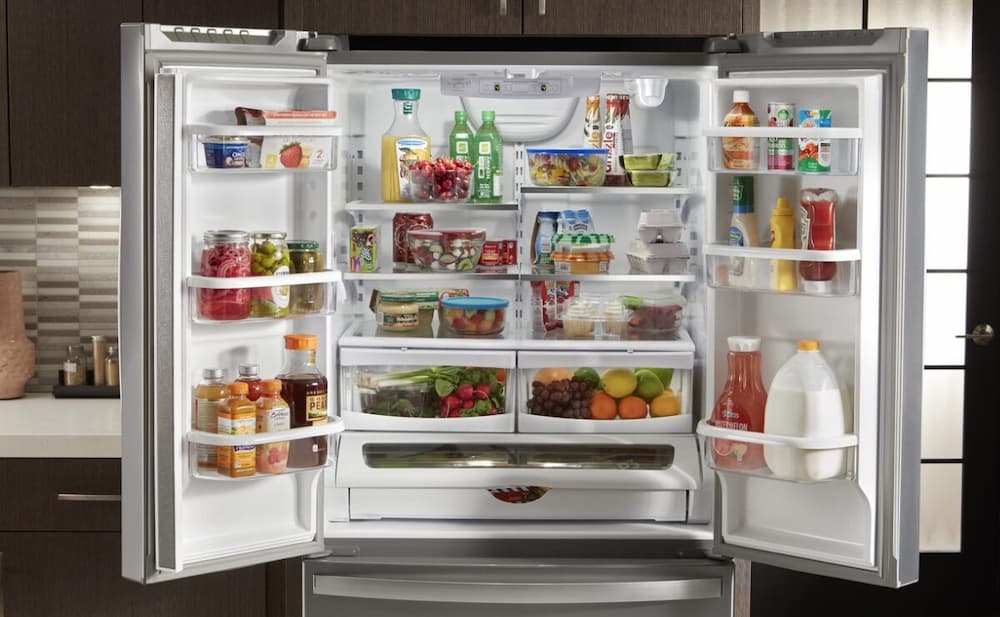
Why Do Amps Matter?
A power supply (such as a plug socket in your home) or a charger provide the current to any device that requires an electrical source. As a result, the item or appliance will use however much current it needs. For this reason, it’s critical to ensure that your power supply can supply enough current for the item or appliance you’re trying to use.
This is less of a concern when the appliance in question is plugged into a socket inside your home because the appliance will use however many amps it requires and the power supply to your home will supply them. Then, you might believe that it makes no difference how many amps your refrigerator uses because you’ll have plenty of electricity.
But you’d be mistaken. A refrigerator’s amps are important because they will significantly affect how much you pay in electricity bills each month.
Your refrigerator will likely use more electricity and cost you more money if it is larger and more powerful. Additionally, thicker cables are required for fridges with higher amperage requirements, which may change how your kitchen is organized and used.
Editor’s Pick: Sriracha is one of the most consumed hot sauces worldwide. But, does sriracha need to be refrigerated?
Energy Ratings
You should first be aware of the energy star ratings for the refrigerator. This enables you to estimate the energy consumption of the refrigerator. This can be calculated by multiplying the watts by the volts, which equals the amps (Watts/Volts=Amps). The typical refrigerator runs at 120 volts and draws.21 amps.
If your refrigerator does not have an energy star rating then you will want to purchase an energy meter. Most hardware stores sell them, so get one today. The meter measures how much power is used by the appliance over time when it is plugged into a wall outlet and then into the refrigerator.
Voltage And Amps
You should be aware of the amp usage of the refrigerator you are thinking about buying. You can then decide what your electrical breaker is capable of handling. You should check your refrigerator’s voltage and amp requirements before using it.
A refrigerator’s breaker size is determined by whether it can operate on 120-volt or 240-volt circuits. The size and brand of the refrigerator will determine the type of voltage circuit you require; in addition, the majority of conventional refrigerators use a straightforward 120-volt circuit.
In terms of comparison, you will look at the amp requirements for the refrigerator in the manufacturer’s documentation. 15 to 20 amps and a 120 volt dedicated circuit are required for standard refrigerators. For your information, a 120-volt breaker would have a single handle.
Our top choice: Liebherr Refrigerator Reviews By Customers
Potential Area Of Concern
The biggest area of concern when it comes to electricity and appliances like a refrigerator deals with the FPE Panel. Federal Pacific Electric Company cheated their way to a recommendation. Homes were constructed with electrical breaker FPE Panels from the 1950s to the 1980s. These panels may also result in electrocution and present a fire risk. They have the capacity to permit electric currents to flow even when they are off. Last but not least, houses with FPE Panels cannot be insured.
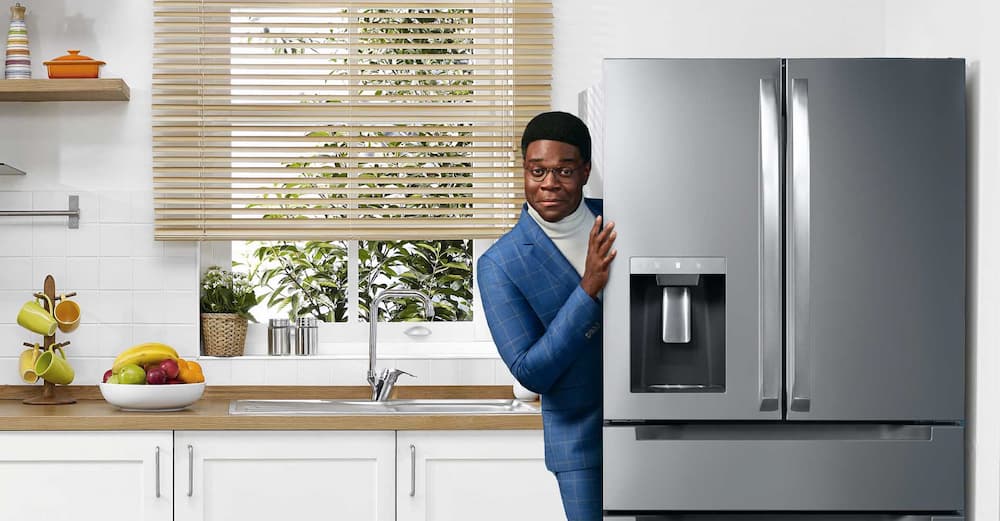
How To Calculate Amp?
Using The Energy Star Rating As A Starting Point
Find out if your refrigerator has an Energy Star rating by searching for its model number on Google. If it does, an estimate of the annual electricity consumption is typically given. A typical Energy Star label might resemble this:
As an illustration, use the label above:
Energy consumption: 227 kWh per year – (that is 227,000 Watts hours per year);
There are 621.91 watt hours in a day when you take 227,000 and divide it by the number of days in a year (365): ( 227,000 / 365 = 621.91 wh ).
Average running watts are calculated as follows: 621.91 watt hours divided by 24 hours make 25.91: ( 621.91 / 24 = 25.91 ).
Running Watts/Voltage = Amps is the formula for calculating running amps. Given that most refrigerators in the US and Canada operate on 120 volts, if you divide the average refrigerator’s 25.91 average watts by this voltage, you get the average refrigerator’s.21 average amps: ( 25.91 / 120 = .21 )
Buying An Energy MeterFor Measuring Power Consumption
You will either need to get in touch with the refrigerator’s manufacturer (who might have this information) or buy a KWH meter if your refrigerator lacks an energy star rating (most vaccine and commercial refrigerators don’t). It’s very simple and accurate to measure the amount of energy used by your appliances with an energy meter.
Although they usually come with user manuals, meters are generally very simple to use. The refrigerator is connected to the device by first plugging the meter into a wall outlet. Over time, the meter will determine how much power the appliance is consuming.
Because they make you more conscious of how much power your appliances are using, these meters are typically inexpensive and could even help you save money on your electric bill. Here are a few vendors from whom you might be able to buy one:
UsingThe Nameplate Amperage To Calculate Using
One more approach is to try performing a calculation using the nameplate amperage. The result of a calculation based on the refrigerator’s nameplate amperage rating is essentially a guess based on the assumed duty cycle.
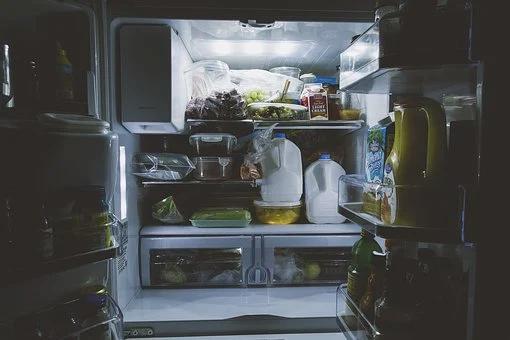
Refrigerators: Do They Require A Dedicated Circuit?
Having a separate circuit for a refrigerator is the best construction practice that is advised.
A dedicated circuit means that your refrigerator will be powered by a totally separate circuit with its own grounding connection.
A 6-amp refrigerator can spike up to 15 to 20 amps during periods of peak usage.
A 15–20 amp circuit is advised in order to avoid an electrical overload, according to local electrical codes.
Along with the other circuit breakers in your main panel board, the power supply outlet for your refrigerator should have its own 20 amp circuit breaker.
When working with home electrical systems, it is safer to budget significantly more money for worst-case scenarios, such as power spikes and surges.
Editor’s Tips: Ghee is a type of clarified butter made from cow or buffalo milk that is primarily used in India, but does ghee need to be refrigerated?
How To Save Energy?
There are a lot of things you can do to cut back on your electric bills when managing a home.
Purchase The Right Appliance
Are you considering purchasing a new refrigerator?
For your household, pick the size and features that are appropriate.
A two-door refrigerator and a chest-style freezer should not have been purchased if they were not necessary.
Apply this to every appliance in your house.
Choose Energy Star Rated Devices
Ratings exist for the electrical consumption efficiency of appliances like air conditioners and refrigerators.
On new appliances you intend to buy, look for the Energy Star rating.
Compressors are the primary motors used in refrigerators and air conditioners.
The most recent inverter compressors operate more effectively and use less electricity than conventional ones.
Though they may be more expensive, inverter-type appliances provide a significant long-term return on investment.
Keep Settings Optimal
The Food and Drug Administration of the United States suggests that a refrigerator and freezer have temperature settings of 40 and 0 degrees Fahrenheit, respectively.
Any temperature setting above these ranges may not be necessary and could significantly increase your electricity costs.
The thermostat in your home should also be adjusted similarly. Reduce the heat if it is not that cold, and turn off the air conditioning if it is not that hot.
Power Down And Unplug Unnecessary Electronics
It is advisable to unplug and turn off all unused electronics.
Electricity is used by even tiny devices like a bread toaster or a red LED indicator light on a television.
Use Passive Lighting And Cooling
During the winter, you can practice cold storage techniques outside in sizable containers.
You can turn off any freezer you have during this time so that your meats will passively freeze.
Turn off any lights that aren’t in use, or leave all the curtains open to let the sunlight into your home.
To passively cool areas of your home, learn where the positive and negative air pressure points are in your house and open windows accordingly.
Install Solar Energy Converters
Solar energy can also be used to generate electricity for your home.
Plan and integrate circuits with available power sources after carefully examining the power requirements of all appliances and electronic devices.
When setting up a solar power source, decide which devices should be connected to the system and check their wattages.
Determine the daily power demand in kilowatt hours by calculating the number of hours that each device will be used.
Calculate the amperage of each device to determine the size and number of photovoltaic panels that will work best for your particular setup.
Types of Refrigerators
A lower amp draw refrigerator or more efficient products are among the goals of many manufacturers. Since their creation, refrigerators have undergone a significant evolution in terms of power consumption.
A number of well-known refrigerator brands are offered globally, including Whirlpool, Samsung, LG, and others. Along with these well-known brands, the South African company KIC is renowned for being energy-efficient.
Dual Refrigerator
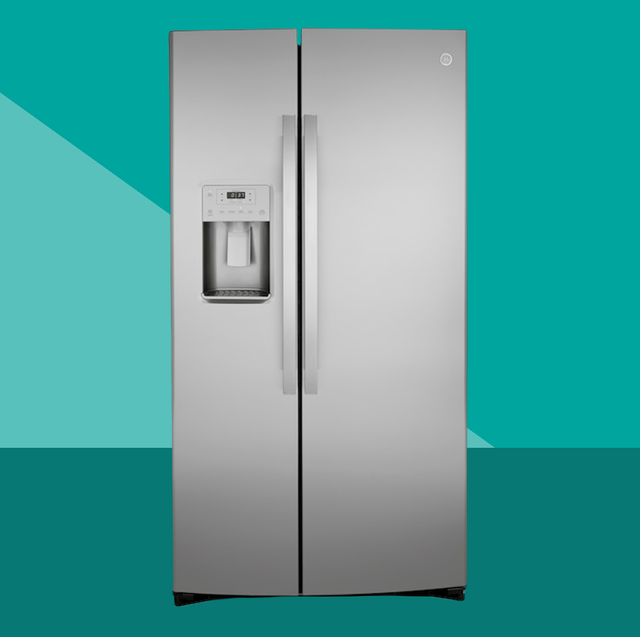
A two-door refrigerator with both freezer and refrigerator features is referred to as a dual refrigerator. The top mount freezer was the most energy-efficient style of dual refrigerator among those with energy star ratings.
French Door Refrigirator
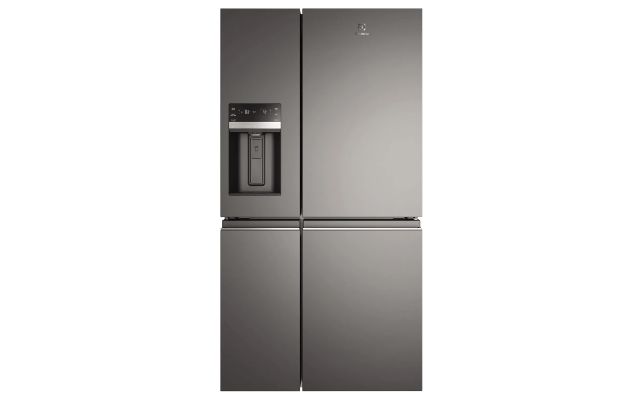
The French door refrigerator has a bottom drawer freezer and two side-by-side doors on the top. Because there is plenty of storage and you can open one door at a time, the design greatly enhances efficiency.
Mini Refrigerator
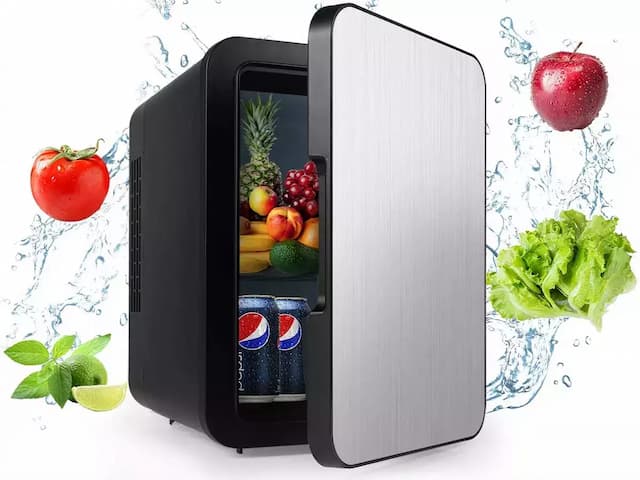
A mini fridge is a portable, small unit that is not made specifically for the home kitchen. Because it is compact, it can be used in RVs, bars, and workplaces.
This unit uses fewer refrigerator amps than larger models. However, there are some limitations on what you can put inside it due to its size.
FAQs
What Happens If The Wrong Size Cables Are Used To Power A Refrigerator?
Thankfully, most refrigerators already have the proper size cables attached, and these cannot be removed. However, it’s important to note that using cables that are too thin to power a high amp fridge presents a serious safety risk because they could become hot and burn.
Which Type Of Refrigerator Uses The Least Energy?
The top mount style is the most energy-efficient, but depending on various factors, such as whether or not an appliance has an ice maker, different appliances can use different amounts of energy.
What Is The Starting Ampage Of A Refrigerator?
It varies from refrigerator to refrigerator, but is typically between 10 and 20. But this only persists for a short while.
Do I Need To Run My Refrigerator On A Separate Circuit?
There are no laws that specifically mandate it, so you are not required to, but it is still regarded as best practice for homeowners. This is due to the fact that, while most refrigerators run at less than 10 amps, this number can occasionally spike much higher, and it’s always a good idea to plan for the worst-case scenario.
Your home will be much safer because you won’t run the risk of an electrical overload by running each appliance on its own circuit.
What Is An Amp Breaker?
In older homes in particular, overloading a circuit with appliances can cause it to short out, rendering all connected appliances inoperable right away. To assist in resolving this issue, circuit or amp breakers are designed. They accomplish this by stopping the electricity in certain rooms of your house.
What Size Circuit Breaker Is Required For A Refrigerator?
An 115 or 120 volt grounded branch circuit with a 15 or 20 amp circuit breaker is required for a refrigerator. Another option is to use a time-delay fuse.
How Many Watts Does a Refrigerator Use?
350–780 watts are needed by a typical home refrigerator.
Refrigerator power usage depends on different factors, such as what kind of fridge you own, its size and age, the kitchen’s ambient temperature, the type of refrigerator, and where you place it.
The power requirements of various refrigerator types vary. An Energy-Star certified refrigerator, for instance, operates up to 9% more efficiently than other models and a lot more efficiently than older appliances. Mini refrigerators are smaller and use less energy than standard kitchen refrigerators. The energy efficiency of top-mount refrigerators is also higher than that of their side-by-side counterparts.
How Many Amps Does A TV Use?
The typical 113W, 120V TV will consume 0.95 amps. However, due to variations in features and screen size, wattage consumption of TV varies from model to model. Additionally, this explains why various TVs require various amp draws.
For instance, you are interested in the amps that your 55-inch TV consumes. To find the total amps, all you have to do is multiply the wattage by the voltage.
Only 1.25 amps are used by your 55-inch flat-screen TV at 150 watts and 120 volts. In this scenario, running your TV alongside other lower-amp appliances on the same circuit won’t cause any issues.

How Many Amps Does A Microwave Use?
The average power consumption of a microwave oven is 1000 watts, or 8.3 amps.
The microwave will therefore use about 8.3 amps of current if you have a standard 120-volt outlet.
Knowing how many amps your microwave uses will allow you to calculate how much electricity it uses per day, month, or year.
Simply multiply the amps by the quantity of time you spend using the microwave each day.
If you use your microwave for 30 minutes per day, for instance, that works out to 0.50 hours each day.
That is multiplied by 8.3 amps to get the daily consumption of 4.15 amp-hours. Just 14.9 kilowatt-hours are used in a month.
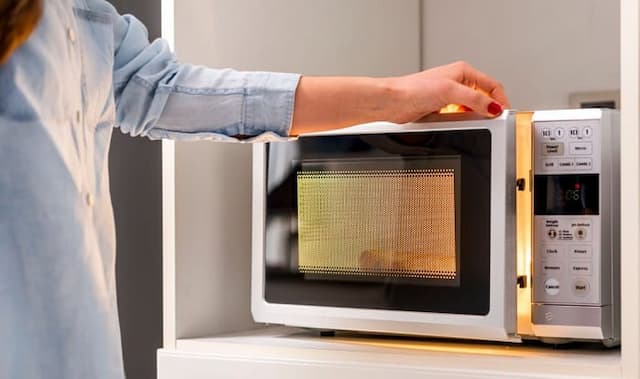
How Many Amps Does a Washing Machine Use?
For each load of laundry, an average washing machine consumes 5 to 20 amps. Depending on the device’s manufacturer and bells and whistles The exact number can be found on the washer’s body on a sticker that is silver in color.
The amount of electrons that flow into electrical appliances like washers is measured in amps. Additionally, you should be aware that washing machines come in various sizes. Each one of them can carry a different volume of clothing and weighs between 5kg and 14kg. Therefore, the size you buy will depend on how big your household is.
If you live in a smaller home, a 6kg or 7kg washing machine will wash enough clothes in one load. You can also choose a larger option, like a washer with a 10 kg capacity.
Of course, these devices won’t use the same amount of amps, and the other features you use also affect consumption. However, the typical washer won’t use more than 20 amps.
You can lower this device’s energy consumption by using fewer features like hot water and washing your clothes in full loads.
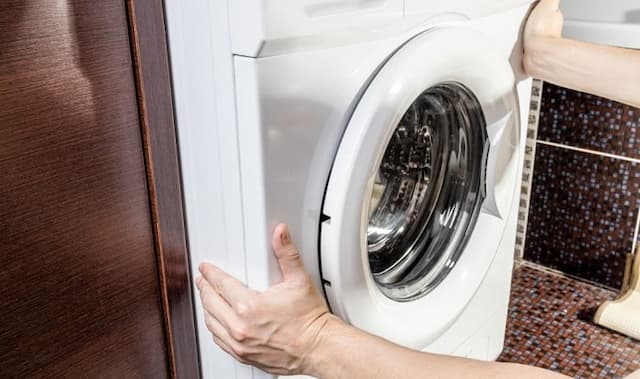
How Many Amps Does A Dishwasher Use?
Household dishwashers use 10 amps of power, mostly. To be safe, your breaker should, however, be set to a higher rating than the appliance being used.
In addition to dishwashers for homes, there are also industrial and commercial dishwashers, which are designed differently to handle much heavier loads.
Commercial heavy-duty appliances are expected to produce greater outputs or work, so they require a higher amount of power to run normally.
Dishwashers used in industry and commerce must operate with more current than those used in homes. Depending on the brand, they have a power capacity of up to 20 amps. Higher amperage is therefore required for other parts such as circuit breakers or breakers connected to these machines.
When buying or using a dishwasher, you might want to know the type right away. To do that, look for the label or the electrical diagram in the manual or stuck to the appliance’s surface. You can learn the bare minimum information there about the power requirements for your device.

How Many Amps Does A Clothes Dryer Use?
A typical clothes dryer uses 7.5 to 30 amps on average. The fact that clothes dryers use heat energy makes this a higher consumption when compared to other appliances in the home. Heat is a notorious consumer of electricity, so you can avoid using your dryer frequently when trying to reduce power consumption.
Laundry day is undoubtedly facilitated by a dryer. In contrast to using a clothesline, you get results right away and save time.
This comfort does not, however, come without a price. Aside from the amount you pay for the dryer upon purchase, you will also pay for each watt of electricity the machine consumes. You can take into account the ampere consumption before placing your order if you haven’t already done your dryer shopping.
The most typical amperage you will find on a dryer is 30 amps, which is on the higher end. When using a high voltage, a dryer will draw 30 amps; when using a low voltage, it won’t.
Once again, the size of the dryer and the voltage it uses determines how much electricity it requires. A larger household will use a higher voltage, whereas a smaller machine will use less voltage.
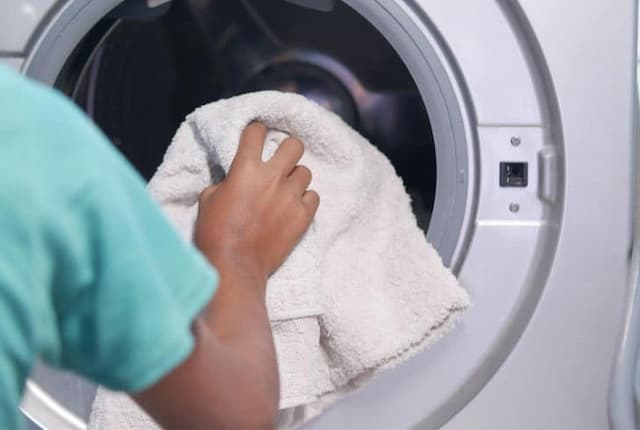
How Many Amps Does A Freezer Use?
A medium-sized freezer will draw between 0.8 Amps and 1.5 Amps of current. This would be the compressor’s operating current draw. The startup draw of the compressor is two to three times its running amperage each time it starts. Comparatively speaking, bigger freezers will use more electricity.
The electricity use of a freezer is difficult to measure. It depends on elements like the freezer’s environment, how frequently it is opened, and its internal capacity. The specifications panel on the back of an appliance usually lists the amps that it will require, such as a freezer.
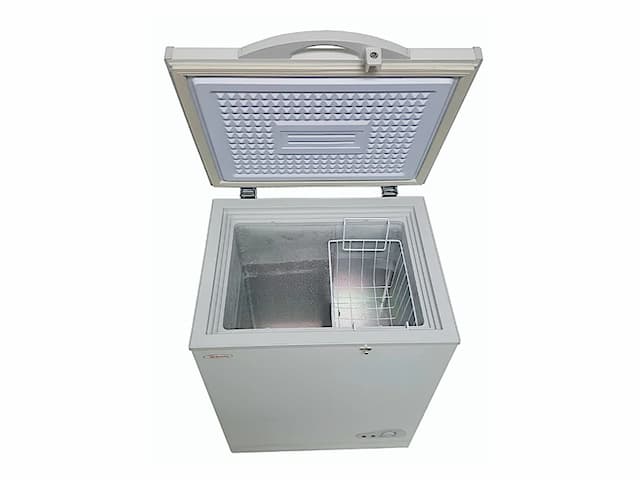
How Many Amps Does A Stove Use?
For normal operation, a stove requires current between 30 amps and 50 amps. The size and features of an electric stove will determine how many amps it consumes. The size of the amp used by a stove depends on its size, with a larger stove requiring a larger amp and a smaller stove requiring a smaller amp.
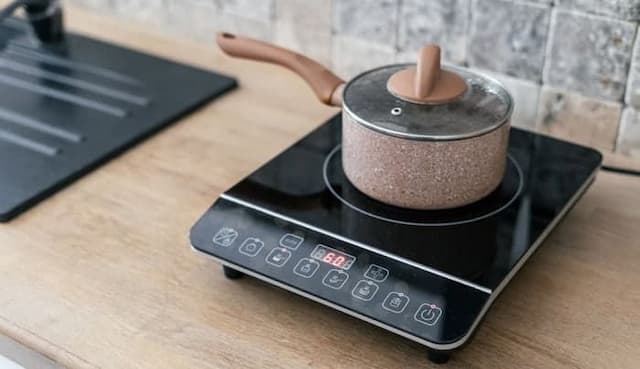
How Many Amps Does A Toaster Use?
Now let’s examine how many AMPs a toaster pulls. Most toasters typically use between 5 and 10 AMPs on average, with a 2000W average power output.
Whether it is a two- or four-slice toaster will affect these numbers, along with the make and model. It’s not a good idea to use your toaster at the same time as other electrical devices like a microwave and a refrigerator when they are all on the same circuit.
A fridge uses 15 to 20 amps on average while a microwave oven uses 10 Amps. Using either of these appliances simultaneously will not be successful, as is immediately apparent.
If you are limited on outlet points, you will need to let the toaster and microwave share one outlet while placing the refrigerator on another.
Due to the refrigerator’s high amperage consumption and the fact that frequently turning a fridge on and off is not recommended, these factors account for the situation.
You will significantly reduce its lifespan if you do that. On the other hand, you don’t need to leave the toaster and microwave on all the time. Both of them may be applied simultaneously. The only thing you need to watch out for is that they don’t run simultaneously, or you run the risk of permanently harming your appliance or the wall socket.
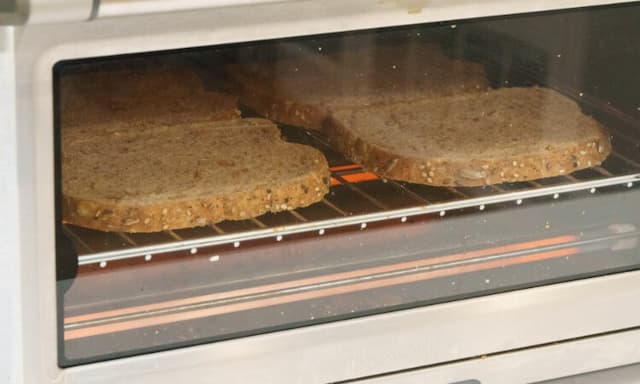
Conclusion
In fact, a refrigerator is a necessity of modern life.
You wouldn’t be able to make your preferred creamy milkshakes without it since you wouldn’t have a way to keep your milk cold.
However, now that you know how to do it, you can figure out how many amps your refrigerator uses.






